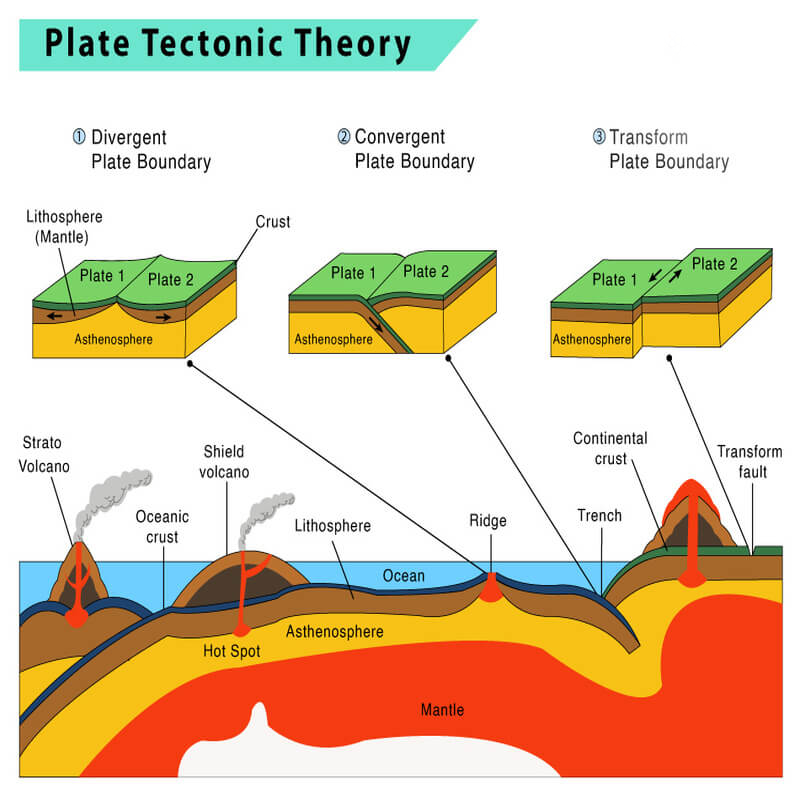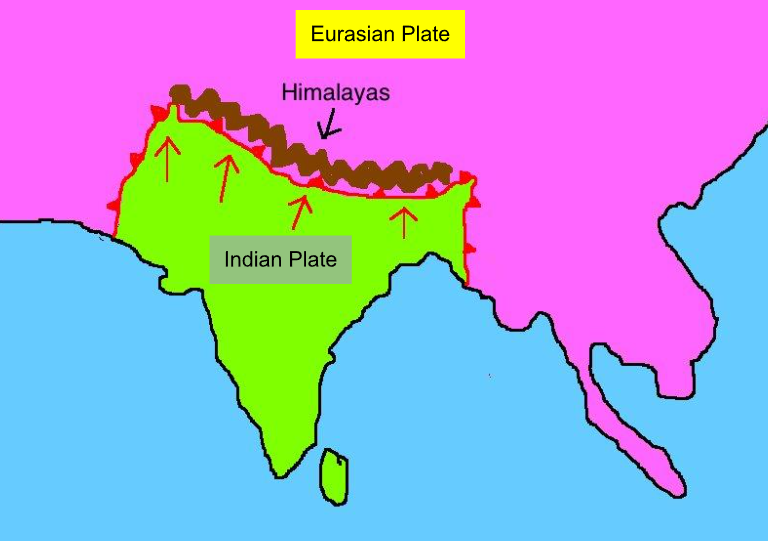-
18 Jul 2024
GS Paper 1
Geography
Day 10: Discuss the key principles of plate tectonic theory. Explain its role in the formation of the Himalayas. (150 words)
Approach
- Briefly introduce the plate tectonic theory.
- Discuss the key principles of plate tectonic theory.
- Explain its role in the formation of the Himalayas.
- Conclude Suitably
Introduction:
Plate tectonic theory describes the large-scale movement of Earth's lithosphere, which is divided into several plates that float on the semi-fluid asthenosphere beneath them. This theory integrates and explains various geological phenomena, including the distribution of earthquakes, volcanic activity, mountain building, and the formation of oceanic and continental features.
Body :
Key Principles of Plate Tectonic Theory
- Lithospheric Plates: The Earth's outer shell, known as the lithosphere, is divided into several large and small plates. These plates float on the semi-fluid asthenosphere beneath them, which allows them to move.
- Plate Boundaries: Plate boundaries are classified into three main types based on the movement of the plates relative to each other:
- Divergent Boundaries: Plates move away from each other, creating new crust. This often occurs at mid-ocean ridges.
- Convergent Boundaries: Plates move toward each other, leading to the destruction or recycling of crust. This can result in the formation of mountain ranges, deep ocean trenches, and volcanic activity.
- Transform Boundaries: Plates slide past each other horizontally, causing earthquakes along faults.
- Plate Movements: Plate movements are driven by mantle convection, where hot material rises and cooler material sinks, creating a circulation pattern that drives the plates' movement. Other forces include slab pull (where a denser plate sinks into the mantle) and ridge push (where rising magma pushes plates apart at divergent boundaries).
- Continental Drift and Sea-Floor Spreading: Plate tectonics encompasses earlier theories such as continental drift, which proposed that continents were once joined and have since drifted apart, and sea-floor spreading, which explains how new oceanic crust forms at divergent boundaries and moves away from the ridges.
- Mountain Building and Earthquakes: Plate tectonics explains the formation of mountains, earthquakes, and volcanic activity as a result of the interactions at plate boundaries. The collision and interaction of plates can lead to significant geological activity.
Role in the Formation of the Himalayas
- Plate Collision: The Himalayas were formed as a result of the collision between the Indian Plate and the Eurasian Plate. This process began around 50 million years ago and is ongoing. The convergence of these plates at a convergent boundary has caused significant geological activity.
- Continental-Continental Convergence: Unlike oceanic-oceanic or oceanic-continental convergence, which typically involves subduction and volcanic activity, the collision between two continental plates, such as the Indian and Eurasian Plates, primarily results in the folding, faulting, and uplift of the crust. This collision has led to the uplift of the Himalayan mountain range.
- Uplift and Folding: The immense pressure from the collision has caused the Indian Plate to push against the Eurasian Plate, leading to the folding and uplift of sedimentary rocks that were previously part of the Tethys Sea, which existed between the two plates. The resulting fold mountains include some of the world's highest peaks, such as Mount Everest.
- Ongoing Tectonic Activity: The Himalayas are still growing due to the ongoing tectonic activity. The collision continues to push the range upward, and this process is accompanied by frequent seismic activity in the region. Earthquakes in the Himalayas are often a result of the stress and strain caused by the tectonic movements.
- Impact on the Region: The formation of the Himalayas has had profound effects on the surrounding region, including influencing the climate and weather patterns, creating barriers for monsoon winds, and impacting the hydrology of major rivers such as the Ganges and the Indus.
Conclusion
The plate tectonic theory provides a comprehensive framework for understanding the dynamic shape of the Earth's surface. The formation of the Himalayas is a prime example of how plate tectonics can create dramatic geological features through the collision and interaction of lithospheric plates. The ongoing tectonic activity continues to shape the Himalayas, making them a significant area of study for geologists and a region of immense geological and environmental importance.






